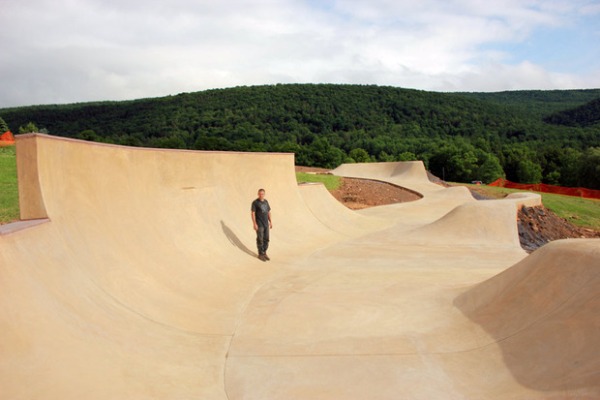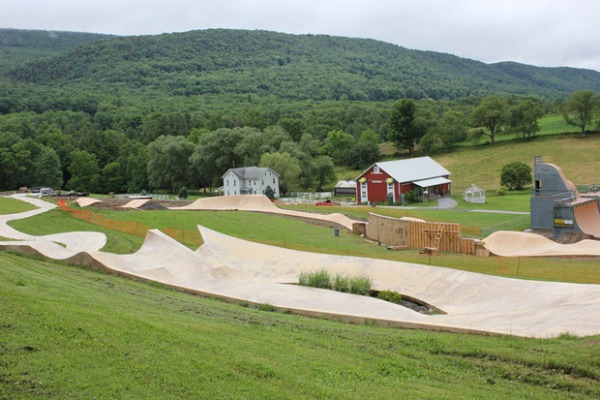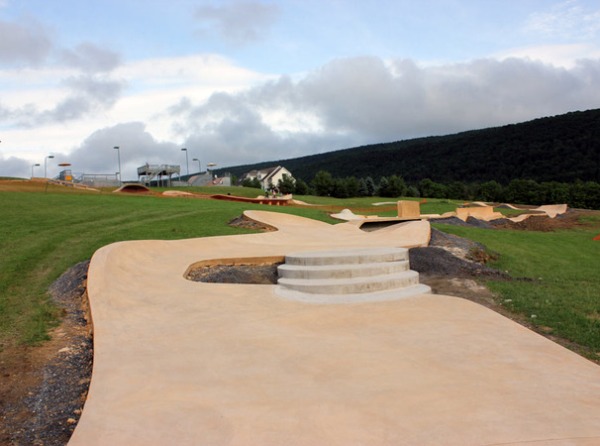Designed to mimic the sloping school yards and dried concrete waterways of Southern Califorinia, where skateboarding’s roots reach deepest, the snake run is the most fundamental form of all skatepark designs. While most snake runs are characterized by a long narrow path—or ditch—flanked by banks and berms to channel the rider through without pushing, the freshly poured concrete at Pennsylvania’s legendary campWoodward resembles something significantly gnarlier. Designed and constructed by California Skateparks, arguably the world’s best skatepark builders, Woodward’s snake run stretches over 1,000 feet punctuated with head high jumps and quaterpipes.
Since welcoming BMX riders in 1980, Woodward has become the most recognizable name in action sports facilities. While the camp has always been about innovation, the construction of the 20,050-square-footTarget Plaza by California Skateparks in 2009 marked the end of an era dominated by wooden ramps, proving a dedication to staying ahead of the curve in terms of concrete skateboard and BMX park design. Now, with the completion of phase two of the snake run, Woodward is returning to skateboarding’s roots while still keeping an eye on progression.
By building the snake run in phases, California Skateparks is able to adjust their designs on the fly, adding or removing features at will. Even with all the pieces connected after more than 10,000 man hours, Kimler still sees the project as a work in progress. “Next year we can continue to add,” he says. “Maybe we need pocket here, lip there, berm here—it’ll get created, whatever’s awesome.”










